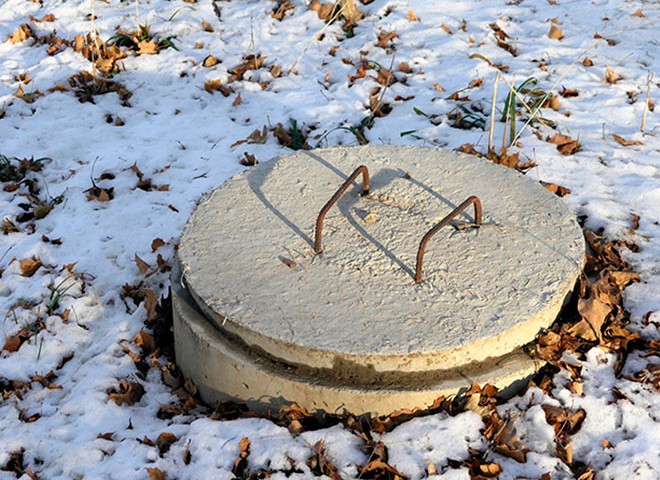
By Becky Schuerman, Extension Associate, Domestic Water/Wastewater Management
In Nebraska, extreme winter weather can hit us quickly and hang around for extended periods of time. Long periods of cold can be hard on things, but what impact do they have on your septic system and/or private well/water system? Are there things you can do to minimize the impact?
A common misconception is that bacteria in a septic tank produce heat as they work to digest the waste within your wastewater system. The truth is, the digestion process does not produce heat, and once temperatures in a tank reach approximately 39°F, almost all of the bacteria activity comes to a halt. Without working bacteria, the wastewater is not properly treated. It is important to keep your tank working and to prevent water within the tank from freezing.
Normal winter conditions usually do not pose a problem for a properly installed tank because the soil and groundcover, such as grass, help serve as a natural insulator. Some newer septic tanks are installed with a layer of insulation on the lid of the tank. Unfortunately, when “normal” turns to “extreme,” natural or added insulation may not be enough to protect the system.
When there is no snow cover, extreme winter temperatures are of the most concern to septic systems. Snow cover helps serve as a natural insulator, protecting the tank and other system components from direct exposure to extreme cold temperatures. However, with or without snow cover, once those very cold temperatures stick around, the following tips can help prevent your tank from becoming an expensive igloo:
• Spread warm water (hot is even better) use throughout the day and week. For example, run the dishwasher in the morning, and do a load of laundry in the evening. Baths or showers also help introduce warm water to the system. As always, spread the use out so as not to overload your system, and never run water constantly.
• Do not compact the soil over your drainfield. Avoid driving over, locating heavy objects on or doing other activities that can compact the drainfield soil, causing potential system damage. These type of activities in the winter can be even more damaging because they force frozen solids into the drainfield. They can cause the system to “back-up” or the drainfield to become broken or clogged.
• If you are traveling for the holidays or for a winter vacation, ask a friend to stop in daily to run a load of laundry or dishes.
• If you migrate south for the winter months or have a seasonal residence, you may want to consider hiring a certified professional to install a tank heater or add insulation around the tank.
• Next fall, consider spreading a thick layer of mulch (8–12 inches) over the tank and other system components to help protect the system from periods of extreme cold.
Water wells are generally less susceptible to periods of extreme cold. The well pump is the most at risk to extreme cold temperatures. If your well pump is in an above–ground well house, make sure the house is insulated.
Another key to protect your water system is to close the shut–off valve for outdoor hydrants to prevent the water from freezing within the hydrant and distribution pipes. Ice can cause pipes to rupture or create other issues in your distribution system. As always, disconnect and drain all hoses from outdoor faucets and hydrants.
Source: Some content in this article was originated by former Extension Educator, Meghan Sittler.